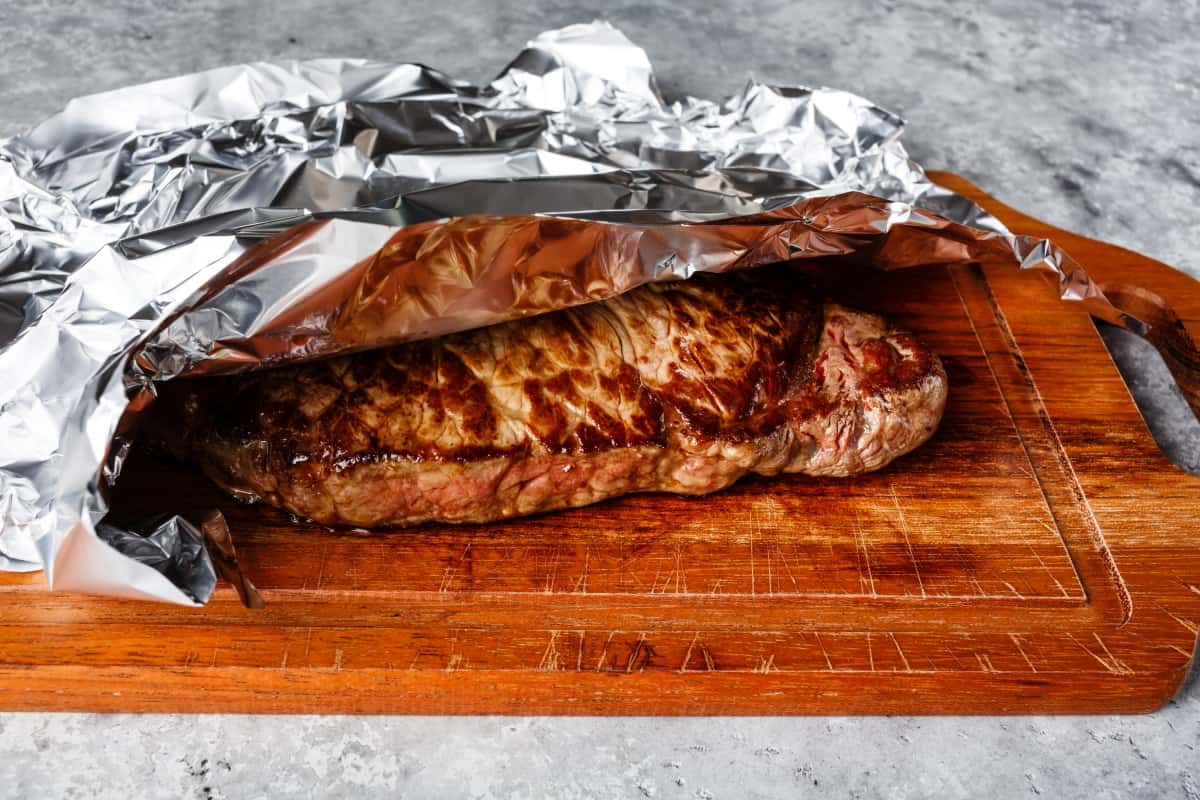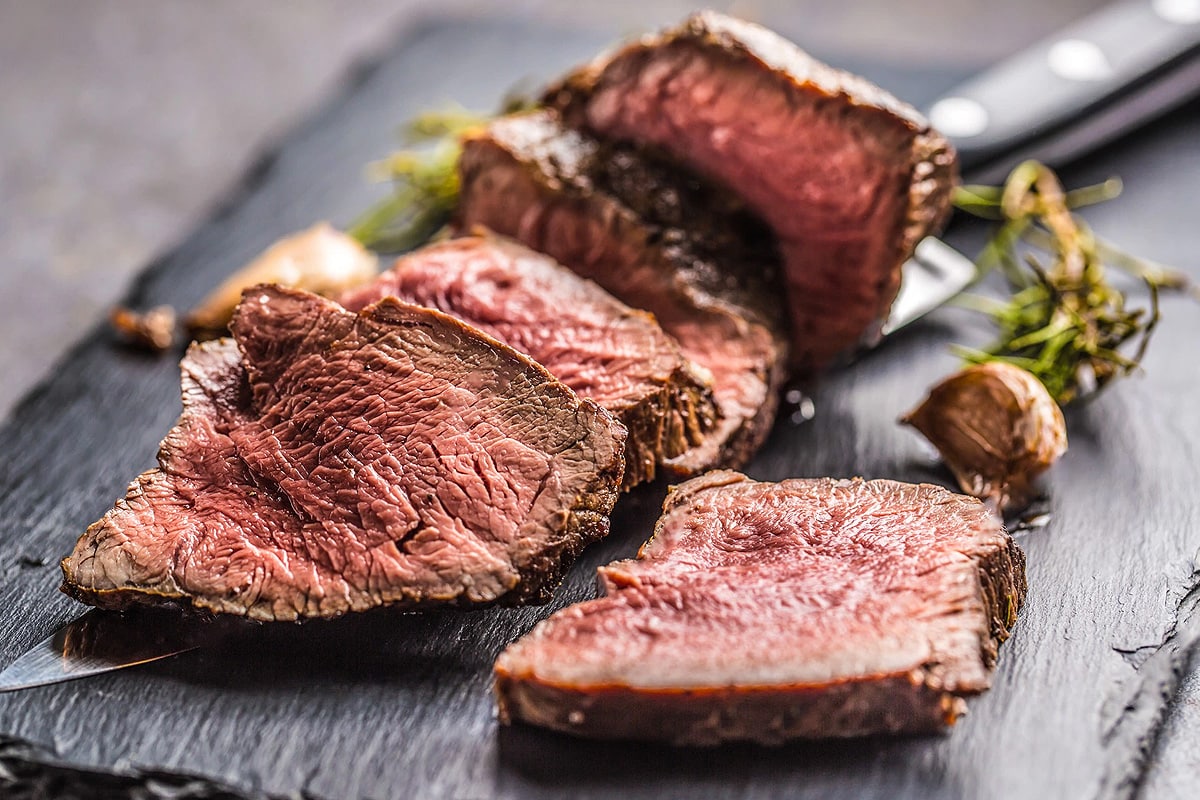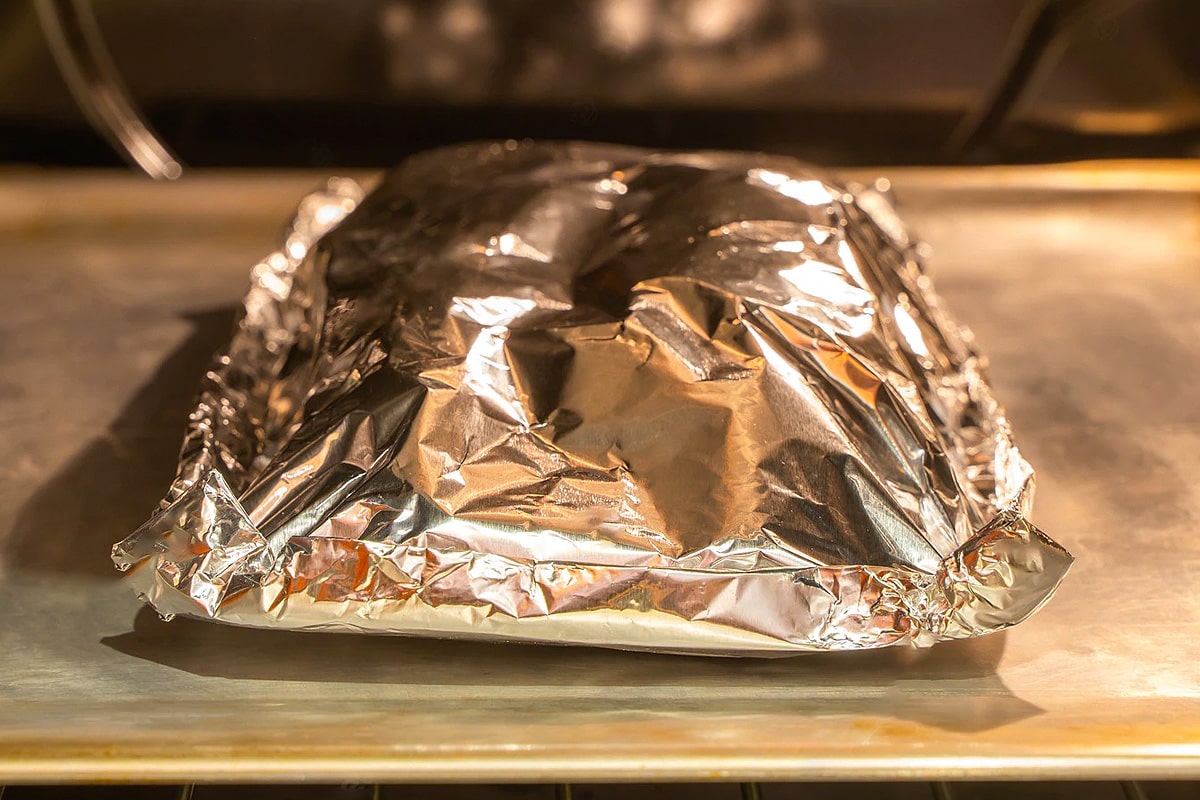Wondering if you should cover the beef with foil during cooking it in the oven? What effect will you get? Will it help to cook faster? How the crust will be affected? Let’s find out!

It All Depends on the Meat You Have
If you’re looking to get juicy beef, you have several options depending on the piece of meat you plan to cook.
If your piece of beef is rough, I recommend cooking it in a sauce for a longer period at a low temperature.
In this case, you must cover the meat so that the juice that will leak from the meat, remains in the tray in which you cooked the meat.
This sauce will help you to avoid burning the meat, and you will also have a delicious sauce that you can use for serving the beef.
Quick Note: If you plan to cook a piece of beef meat that contains bones or a lot of tendons, I will recommend this meat also at a low temperature for a longer time.
This way the tendon will soften and you will get soft meat with a gelatinous texture and a delicious sauce.
If you have a piece of beef meat of superior quality and it is soft, then I suggest cooking it over high heat on all sides to form a crust and keep the juice inside. Like how I did when I cooked the beef wellington without mushrooms.
And then to roast, it is uncovered in the preheated oven for a few minutes until the beef will reach the desired temperature inside. Use a meat thermometer to check the inner temperature of the meat.
Regarding the Minnesota department of health, you need a minimum temperature of 145°F to cook the beef. If you’re looking for a medium cook, then 160°F for a well-done beef, the meat should reach 170°F.
Pro Tip: Cook the meat 2 degrees less than the desired temperature you want to get inside, then let the meat rest for 10-15 minutes.
Thus during rest time, the inner temperature of the meat will increase a little and you will reach the required temperature.
Also, by leaving the meat to rest for half of its cooking time, the inside juice from the beef will be better distributed over the entire surface of the meat.
Benefits of Covering the Beef

It Helps to Keep the Meat Moist
If you will cover the beef with aluminum foil during the cooking, you will keep the beef moist because the steam that will evaporate, will remain under the foil and you will get a juicy piece of beef meat.
Quick Note: Using a toothpick make a few holes in the foil to make sure that the steam excesses will have some places where to leave.
It Will Cook Evenly
As the heat will be distributed evenly under the foil, you will get the same cooking level on the entire surface of beef meat.
This is important especially when you are cooking a large piece of beef.
You Will Not Burn the Meat
If you see that the top or edges of the meat are almost enough cooked but the center of the beef still needs a little extra time, then consider covering it with aluminum foil.
In that way, you will stop cooking it further on the exterior and you will win some time to allow the meat to cook slowly in the interior.
When Should You Cover the Beef?

While Cooking a Large Amount of Beef
It all depends on the situation. When you plan to cook a piece of beef that is heavier than 8 pounds, then you may consider covering it in the middle of the process.
Otherwise, you may risk overcooking the meat’s edges while the interior of the meat may remain raw in some places.
When You Shouldn’t Cover the Beef?
It is not recommended to cover the beef if you need to obtain a nice crispy crust. If you will cover it with aluminum foil, then the crust will not be on direct heat and you will not get these crunchy edges.
Bottom Line
As you can see it all depends on what piece of beef you plan to cook and what result you want to get.
Because of these factors, you should make the decision if you should cover it to get moist and juicy meat inside by cooking it in low heat and for a longer period of time.
If you use a superior soft piece of beef, then you can cook it uncovered on high heat for a shorter period of time to form a crust that will keep the meat juice inside.

Leave a Reply